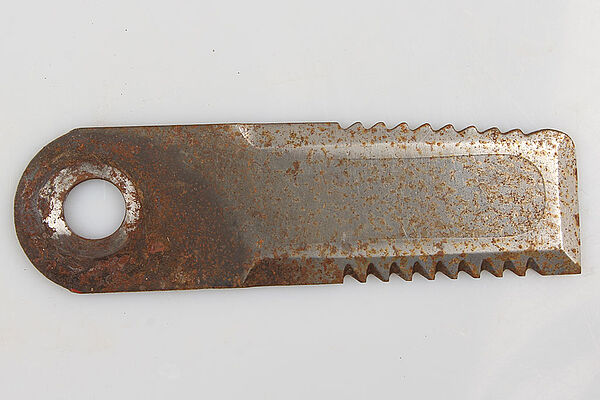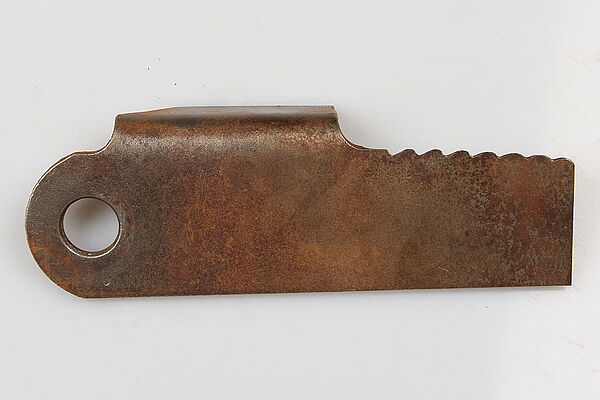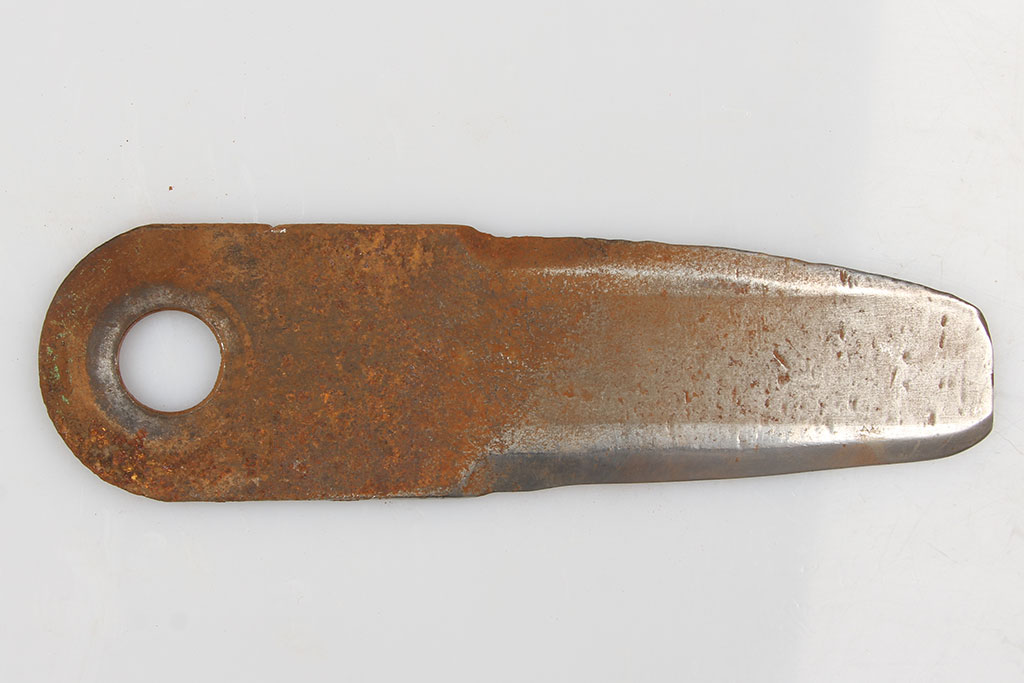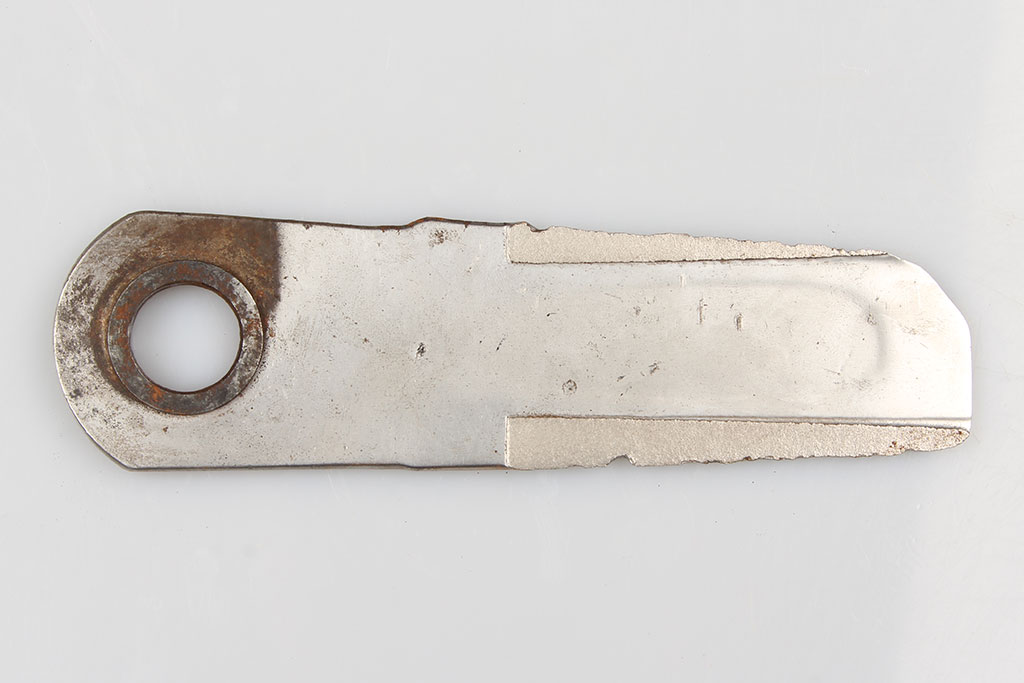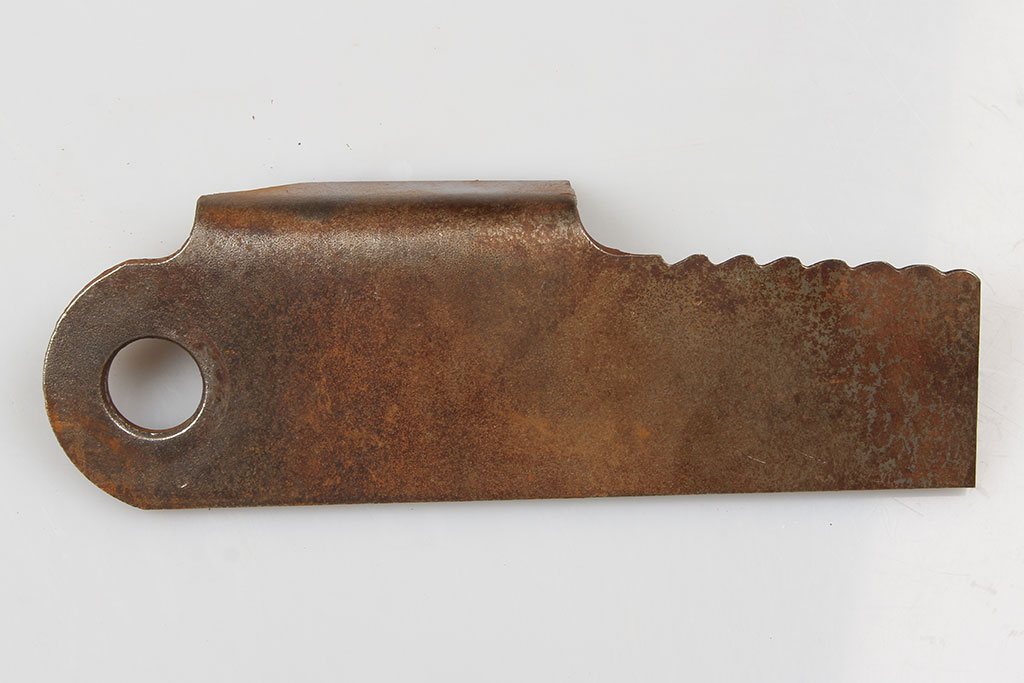Harvest 2022
Servicing the straw chopper
The gallery shows a selection of the straw chopper blades
that customers handed in at our Agritechnica 2017 stand.
Radura is right on!
- Find the correct blade for your straw chopper
- Combine the blades with the correct counterblade
- Select the complete set of blades for your chopper shaft
- Choose a new option, such as the high-performance blades
Curious?
Click the arrow below to access the Radura straw chopper blade finder
Some guidance:
The different grades of wear
Straight blade Serrated blade
![[Translate to Englisch:] radura Strohhaeckslermesser Verschleis](/fileadmin/images/Xchange/Strohhaeckslermesser-Verschleiss.jpg)
1 slightly worn 2 fairly worn 3 heavily worn
Replace in good time
All theories on chopper blade geometries are based on the assumption that the blade is replaced in good time. This is to avoid reduced chopping efficiency and an increase in power input.
The blades that were handed in at our Agritechnica Xchange desk were grouped by their condition, which means by service hours. The individual condition bore testimony to the machine owner’s view on when a blade is worn.
When do you replace your blades?

![[Translate to Englisch:] radura Schlegelmesser](/fileadmin/images/Xchange/Strohhaeckslermesser_3Sorten.jpg)
![[Translate to Englisch:] radura Gegenmesser](/fileadmin/images/Xchange/Gegemesser.jpg)
Agritechnica 2017 stand activity
The GROUP SCHUMACHER stand at Agritechnica turned the spotlight on straw chopping. We invited visitors to bring a worn chopper blade to the stand and trade it in for a toolbox.
789 farmers and contractors followed this invitation and engaged in lively discussions on blade types, wear and chopping results.
All kinds of blades
A random sample taken from all blades handed in showed that about an equal number of blades had smooth edges and serrated edges. 85% of the blades had two cutting edges but only 12% also had a faceted end.
Many discussions revolved around the question of whether it was smooth or serrated blades that gave a better splicing effect to the straw. Various field tests have shown that serrated edges are more effective in this respect. In this context, however, the counterblade is often neglected. For example, depending on the design of the chopper, a combination of serrated counterblades and smooth chopping blades can achieve the same effect at lower fuel costs.
The question as to which is the proper blade geometry is down to the specific farming regime, especially the type of cultivation that is following the harvest. Is it minimum till or traditional ploughing?
![[Translate to Englisch:] Hartschichtmesser gerade](/fileadmin/images/Xchange/Strohhaeckslermesser-gerade.jpg)
Longer service life
Many customers call for chopper blades that offer a longer service life. This, too, was a hot topic at Agritechnica. However, our sample of worn blades revealed that only very few blades were actually hard-faced. GROUP SCHUMACHER offers hard-faced blades which give a so-called beaver tooth effect.
 Deutsch
Deutsch Englisch
Englisch Français
Français Português
Português Русский
Русский




